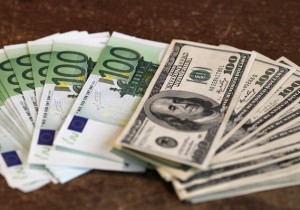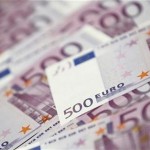 Yesterday’s trade saw EUR/USD within the range of 1.1146-1.1249. The pair closed at 1.1245, soaring 0.41% on a daily basis. The daily high has been the highest level since September 24th, when the cross registered a high of 1.1296.
Yesterday’s trade saw EUR/USD within the range of 1.1146-1.1249. The pair closed at 1.1245, soaring 0.41% on a daily basis. The daily high has been the highest level since September 24th, when the cross registered a high of 1.1296.
At 6:19 GMT today EUR/USD was gaining 0.24% for the day to trade at 1.1271. The pair tested the range resistance level (R3), as it touched a daily high at 1.1277 at 6:21 GMT.
Today the cross may be influenced by a number of macroeconomic reports as listed below.
Fundamentals
Euro area
Economic Sentiment Indicator
The final value of the consumer confidence index probably confirmed the preliminary reading in September at -7.1. It has been the lowest level since July. The final index for August came in at -6.9, down from a preliminary value of -6.8. The indicator measures consumer confidence on a scale of -100 to +100. A reading of -100 suggests a lack of confidence, zero means neutrality and a reading of +100 indicates extreme levels of confidence. This indicator is one of the five major components, that comprise the Economic Sentiment Indicator (ESI).
The ESI probably dipped to 104.1 in September, according to expectations, from a reading of 104.2 in August. The latter has been the highest index level since June 2011, when a value of 105.4 was reported. The Economic Sentiment Indicator (ESI) is a composite indicator, consisting of five sectoral confidence indicators with different weights: Industrial confidence indicator, Services confidence indicator, Consumer confidence indicator, Construction confidence indicator and Retail trade confidence indicator. The ESI is calculated as an index with a mean value of 100.0 and standard deviation of 10 over a fixed standardized sample period.
Lower consumer confidence usually implies lesser willingness to spend, including large-ticket purchases, while consumer spending is a key factor behind economic growth. Therefore, in case either the ESI, or the consumer confidence indicator dropped more than anticipated, this would cause a moderate bearish impact on the euro. The European Commission is expected to release the official ESI reading at 9:00 GMT.
German consumer inflation – preliminary estimate
German preliminary annualized consumer inflation probably slowed down to 0.1% during September, according to the median forecast by analysts. If so, it would be the lowest annual rate of inflation since February, when consumer prices went up 0.1% year-on-year. Augusts final inflation rate was at 0.2%, or in line with the preliminary estimate. It was driven by a further decrease in energy prices, which neutralized an increase in prices of food and services.
Energy costs went down 7.6% year-on-year in August, as prices of heating oil plunged 27.6% and prices of motor fuels dropped 9.5%. Prices of other energy products were also down, namely charges for central and district heating (-6.5%) and electricity (-1.0%). On the other hand, prices of food and non-alcoholic beverages rose 0.6% year-on-year in August, according to the report by Destatis. Last month prices of goods as a whole slumped 0.9%, after another 0.7% drop in July, while cost of services was up 1.2% in August, following a 1.1% increase in July.
The nations preliminary annualized Consumer Price Index, evaluated in accordance with the harmonized methodology, probably fell 0.1% in September, according to market expectations. If so, it would be the first annual drop since February 2015, when the CPI was reported to have decreased at a final 0.1%. Annual harmonized consumer inflation in Germany remained steady at 0.1% for a third straight month in August, according to final data.
In case the annualized general CPI slowed down more than expected and further distanced from the 2-percent inflation objective, set by the European Central Bank, this would have a moderate-to-strong bearish effect on the euro, as it would imply that ECBs accommodative monetary policy has not yet produced the desired effect of vitalizing economic activity. Destatis is scheduled to release the preliminary CPI report at 12:00 GMT.
United States
CB Consumer Confidence Index
Confidence among consumers in the United States probably worsened in September, with the corresponding index coming in at a reading of 96.0, according to expectations, from 101.5 in August. The latter has been the highest index value since January, when the gauge was reported at 103.8.
This indicator measures the level of individuals confidence in the US economic development. It is considered as a leading indicator, as it gives an early insight into consumer spending, which accounts for most of the nations GDP.
The index has 1985 as a base year, when the base value was 100. This year was chosen, as it was neither a peak nor a bottom. The Consumer Confidence Index (CCI) is calculated on the basis of a household survey, which reflects consumers opinion on current conditions and future expectations regarding the US economy. Opinions on current conditions account for 40% of the index, while expectations of future conditions account for the remaining 60%. The surveys objective is to define consumer attitudes and buying intentions, while the data are filtered by age, income and region.
A sample of 5 000 households in the United States serves as a basis for the survey. Each month respondents give their opinion based on the answers to five questions: Current business conditions; Business conditions for the next six months; Current employment conditions; Employment conditions for the next six months; Total family income for the next six months. Respondents may answer each question as “positive”, “negative” or “neutral”.
Each of the five questions is given a “relative value”, or the positive responses are divided by the sum of the positive and negative responses. The relative value is then compared against each relative value from the base year (1985). The comparison of the relative values leads to the “index value” for all five questions. These index values are then averaged in order to form the value of the CCI.
In case the index fell more than anticipated, this would have a moderate bearish effect on the US dollar, as lower confidence suggests a lower willingness to spend and, respectively, a slower economic growth. The Conference Board research group is to publish the official index reading at 14:00 GMT.
Bond Yield Spread
The yield on German 2-year government bonds went as high as -0.240% on September 28th, after which it slid to -0.254% at the close to lose 1.8 basis points (0.018 percentage point) compared to September 25th. It has been the first drop in the past four trading days.
The yield on US 2-year government bonds climbed as high as 0.715% on September 28th, after which it fell to 0.676% at the close to lose 2.4 basis points (0.024 percentage point) compared to September 25th.
The spread between 2-year US and 2-year German bond yields, which reflects the flow of funds in a short term, shrank to 0.930% on September 28th from 0.936% on September 25th. The September 28th yield spread has been the lowest one since September 18th, when the difference was 0.910%.
Meanwhile, the yield on German 10-year government bonds soared as high as 0.650% on September 28th, after which it slid to 0.589% at the close to shed 6.2 basis points (0.062 percentage point) compared to September 25th. It has been the fourth drop in the past five trading days.
The yield on US 10-year government bonds climbed as high as 2.169% on September 28th, after which it slipped to 2.098% at the close to lose 6.8 basis points (0.068 percentage point) compared to September 25th.
The spread between 10-year US and 10-year German bond yields shrank to 1.509% on September 28th from 1.515% during the prior day. The September 28th yield difference has been the lowest one since September 18th, when the spread was 1.469%.
Daily and Weekly Pivot Levels
By employing the Camarilla calculation method, the daily pivot levels for EUR/USD are presented as follows:
R1 – 1.1254
R2 – 1.1264
R3 (range resistance – green on the 30-minute chart) – 1.1273
R4 (range breakout – red on the 30-minute chart) – 1.1302
S1 – 1.1236
S2 – 1.1226
S3 (range support – green on the 30-minute chart) – 1.1217
S4 (range breakout – red on the 30-minute chart) – 1.1188
By using the traditional method of calculation, the weekly pivot levels for EUR/USD are presented as follows:
Central Pivot Point – 1.1209
R1 – 1.1315
R2 – 1.1435
R3 – 1.1541
S1 – 1.1089
S2 – 1.0983
S3 – 1.0863





